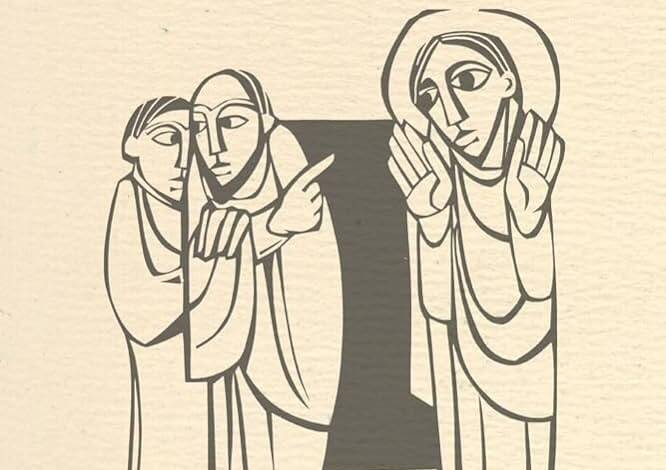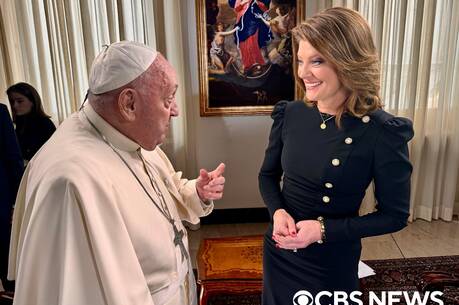I can vividly remember sitting at my desk at America Media and opening an email from Liturgical Press, the esteemed Catholic publishing house, about a new book on Jesus written by a scholarly author who, I’m embarrassed to say, I had never heard of: Gerhard Lohfink.
At the time, in the middle of writing my own book on Jesus, I sighed and thought, “Oh, another one I’ll have to plow through now!” But at the top of the email was a blurb that stopped me in my tracks and made me—compelled me—to order the book immediately. It was an endorsement by my former professor of New Testament at the Weston Jesuit School of Theology (now Boston College’s Clough School of Theology and Ministry), Daniel J. Harrington, S.J.
Father Harrington wrote, simply, “Lohfink’s Jesus of Nazareth is the best Jesus book I know.” Honestly, I could hardly believe it. As a New Testament scholar and the former editor of the scholarly journal New Testament Abstracts, Father Harrington must have read hundreds, perhaps thousands, of books on Jesus. It was hard to imagine him writing an encomium like that for any one book, but there it was.
Of course, Father Harrington was, as he was on all things related to the New Testament, correct. Father Lohfink’s book, Jesus of Nazareth: What He Wanted, Who He Was, as many readers around the world know, is a model of clarity, scholarship, insight, belief and, best of all, surprises. There were many times when I dog-eared a page, underlined a passage or made a mental note to quote Father Lohfink in my own book, thinking, “I’ve never thought of that before.”
Father Lohfink, who died on April 2, was well-known in his native Germany (and in scholarly circles) before his “breakout” book on Jesus, which was published in 2012. A Catholic priest, he was for many years a professor of New Testament exegesis at the University of Tubingen. He also wrote several other popular books, including No Irrelevant Jesus: On Jesus and the Church Today, The Forty Parables of Jesus and The Our Father: A New Reading, all published by Liturgical Press in handsome editions. Since 1986, he had worked as a theologian for the Catholic Integrated Community, an apostolic community (later dissolved) that sprang from the Second Vatican Council and was based in his native Germany.
But it was for his book on Jesus that he was best known among Catholics. His one-volume masterpiece is an artful mix of information on what is often called the “historical Jesus” (that is, considering what we can know about the life and times of the man who walked the dusty earth in first-century Galilee and Judea) and the “Jesus of faith” (meditations on the Son of God and the object of our faith.) Father Lohfink, like all good believing scholars, saw no contradiction between the two, and a good deal of the book not only reflects on what the Gospels mean for contemporary Christians, but reminds readers of the historicity of the one in whom we believe. Against the charge, for example, that miracles were “in the air” at the time of Jesus and we can therefore discount the miraculous in the Gospels, Father Lohfink writes:
[M]ajor personalities who not only imparted therapies but actually performed miraculous healings were extremely rare in antiquity, and well attested “miracles” were even more uncommon.
Father Lohfink’s extraordinary book helped me to see the Gospels and Jesus in a new light, by simply offering insights that I hadn’t considered before, despite having read a passel of what Dan Harrington called “Jesus books.” Let me just offer just two examples, from many. In his chapter “Jesus’ Parables,” Lohfink discusses the parable of the “hidden treasure,” where a man discovers a buried treasure in a field and sells all he has to buy the field (Mt 13:44-5). Father Lohfink makes the salient (and to me novel) point that what this man is doing is hardly moral. “The day laborer acquires his discovery by cunning, if not to say fraud,” he writes. “He leaves the owner of the field in the dark about what he has found.”
Then he makes this comment, which, in a stroke, put so many otherwise confusing parables in a new light.
He is thus one of those “immoral heroes” in Jesus’s parables, and what Jesus truly wants to bring to light here is that everything depends on a decisive seizing of the moment, an engagement that goes for broke, that quickly, recklessly and with complete goal-directedness risks everything on a throw of the dice. The reign of God needs crooks like that.
The key to many of Jesus’ parables, then, is not that we are meant to be fraudsters or crooks, but that we must act with as much verve as these “immoral heroes.” (Full marks to Linda Maloney, his translator, for rendering his German in such vivid English prose.)
Another insight that I found helpful was his observation that not all of Jesus’ disciples followed him along the way—that is, literally along the road. Some may have been, like Martha, Mary and Lazarus, not only friends, but what Father Lohfink called “resident disciples.”
“Jesus’ immediate followers,” Father Lohfink writes, “those who travel with him throughout Israel, and those among his adherents, friends, and sympathizers who remain tied to their own homes augment and sustain each other, offer mutual support and help, and so constitute an inseparable, organic whole.”
I could go on, but perhaps the best thing I can do is suggest that you purchase and read his superb book.
Father Lohfink was also extraordinarily generous in answering questions via email during my research for my book on Jesus, in calm, clear and direct emails. So I ended up being grateful not only for his scholarship but his friendship. May he rest in peace with Jesus Christ, whose life, death and resurrection he brought to life for so many of us.








